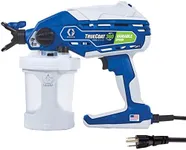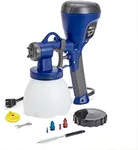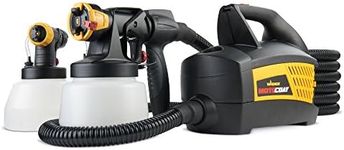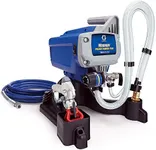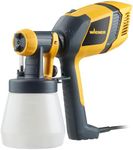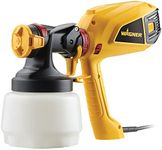Buying Guide for the Best Electric Auto Paint Sprayer
Choosing the right electric auto paint sprayer can make a big difference in the quality and ease of your painting projects. The right sprayer will help you achieve a smooth, even finish with less effort and waste. When shopping for a paint sprayer, it's important to consider how often you'll use it, the types of projects you'll tackle, and your experience level. Understanding the key specifications will help you match a sprayer to your needs and ensure you get the best results.Spray Pattern TypeThe spray pattern type refers to the shape and direction in which the paint is sprayed, such as horizontal, vertical, or circular. This is important because different patterns are better suited for different surfaces and project sizes. Some sprayers offer adjustable patterns, which adds versatility. If you plan to paint a variety of surfaces, look for a sprayer with multiple pattern options. For mostly flat, large surfaces, a horizontal or vertical pattern may be best, while a circular pattern can help with smaller or detailed areas.
Nozzle SizeNozzle size determines how much paint is released and how fine or coarse the spray is. Smaller nozzles are ideal for thin paints and detailed work, while larger nozzles handle thicker paints and cover larger areas faster. If you plan to use different types of paint or work on both small and large projects, choose a sprayer with interchangeable nozzles. Match the nozzle size to your typical paint type and project scale for the best results.
Paint Flow ControlPaint flow control allows you to adjust how much paint is sprayed at once. This is important for managing paint usage and achieving a smooth finish without drips or overspray. Some sprayers have simple dial controls, while others offer more precise adjustments. If you want more control over your work, especially for detailed or varied projects, look for a sprayer with easy-to-use flow control settings.
Power Source and Motor StrengthElectric paint sprayers are powered by motors, and the strength of the motor affects how well the sprayer can handle thicker paints and larger jobs. Higher wattage or stronger motors can spray thicker materials and cover more area quickly, but may be heavier. For occasional or small projects, a lower-powered sprayer may be sufficient. For frequent use or large surfaces, a more powerful motor will save time and effort.
Paint Container CapacityThe paint container capacity is how much paint the sprayer can hold at once. Larger containers mean fewer refills, which is helpful for big projects, but can make the sprayer heavier. Smaller containers are lighter and easier to handle, but require more frequent refilling. Choose a capacity that matches the size of your typical projects and your comfort with handling the sprayer's weight.
Ease of CleaningCleaning your paint sprayer after use is essential for keeping it in good working condition. Some sprayers are designed with easy-to-disassemble parts or special cleaning features. If you want to save time and effort, look for a model that is known for easy cleaning. This is especially important if you plan to use the sprayer frequently or with different types of paint.
Weight and ErgonomicsThe weight and design of the sprayer affect how comfortable it is to use, especially for longer periods. Lighter, well-balanced sprayers are easier to handle and reduce fatigue. If you expect to work on large projects or for extended times, prioritize a sprayer that feels comfortable in your hand and is not too heavy for you to manage.


